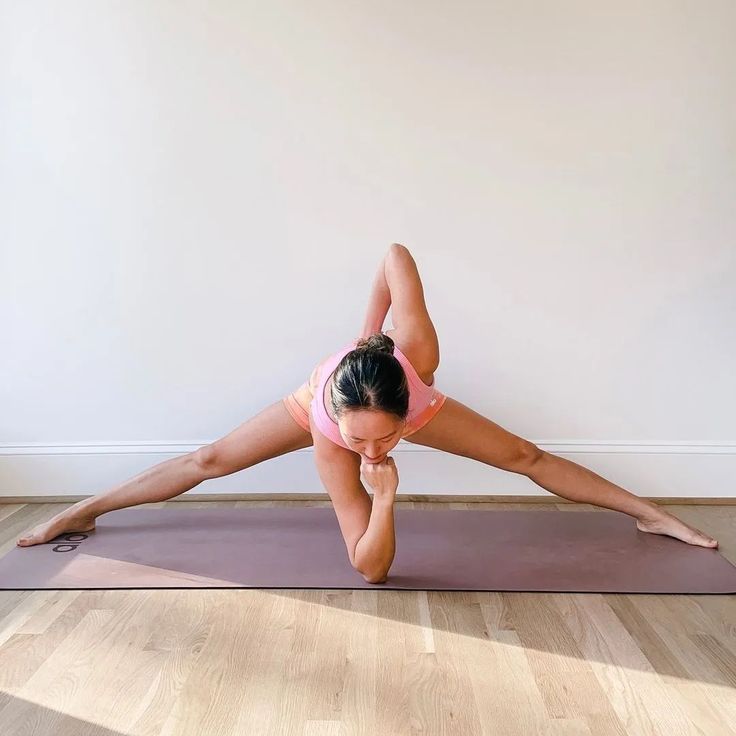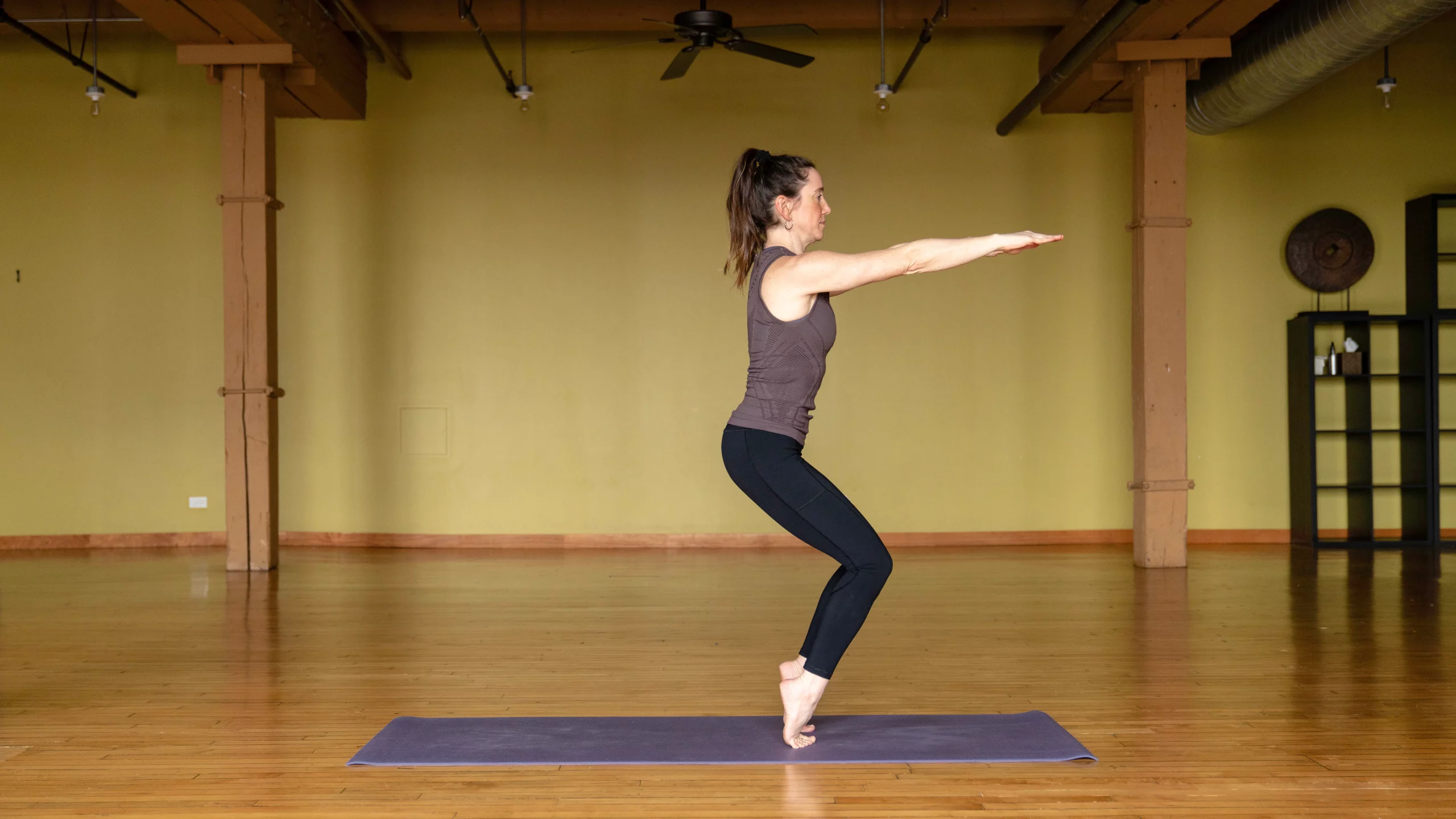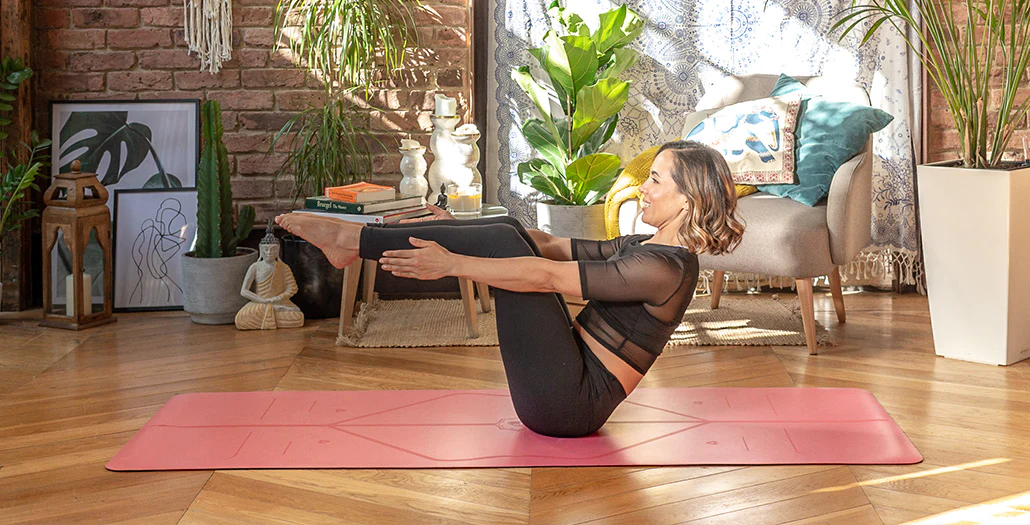Building strength with yoga is a journey that combines the physical with the mental, offering a unique approach to enhancing body power and resilience. Unlike traditional strength training that relies heavily on weights and machinery, yoga uses body weight and poses to challenge and develop muscle strength. This holistic practice not only strengthens the body but also promotes flexibility, balance, and mental clarity, making it a comprehensive tool for overall well-being. In this post, we look into effective strategies and poses designed to fortify the body, improve core stability, and elevate physical and mental endurance.

Contents
- 1 How To Build Strength With Yoga?
- 1.1 1. Focus on Strength-Building Poses:
- 1.2 2. Practice Regularly:
- 1.3 3. Hold Poses for Longer:
- 1.4 4. Incorporate Advanced Variations:
- 1.5 5. Use Props for Support and Challenge:
- 1.6 6. Focus on the Breath:
- 1.7 7. Integrate Functional Movements:
- 1.8 8. Pay Attention to Alignment:
- 1.9 9. Rest and Recover:
- 2 Is Yoga Better Than Weights?
- 3 Frequently Asked Questions
How To Build Strength With Yoga?
Building strength through yoga is not only about physical gains but also involves enhancing mental resilience and emotional well-being. Yoga combines breath control, meditation, and poses designed to encourage relaxation and reduce stress, alongside strengthening the body. Here’s how to harness the power of yoga for strength building:
1. Focus on Strength-Building Poses:
Certain yoga poses are particularly effective for building muscle strength due to the need to hold your body weight in challenging positions. Incorporate poses such as Plank Pose, Chaturanga Dandasana (Four-Limbed Staff Pose), Warrior series, and Chair Pose into your routine. These poses target multiple muscle groups, including the arms, legs, back, and core, offering a comprehensive strength workout.
2. Practice Regularly:
Consistency is key to building strength with yoga. Aim to practice at least 3-4 times a week, gradually increasing the intensity and duration of your sessions as your strength and endurance improve. Over time, you will notice an increase in muscle tone and strength throughout your body.
3. Hold Poses for Longer:
To maximize strength gains, focus on holding poses for longer periods. Start with holding a pose for a few breaths and gradually work your way up to a minute or more. Holding poses challenges your muscles to sustain the effort, leading to increased strength and endurance.

4. Incorporate Advanced Variations:
As you become more comfortable with basic poses, start incorporating more advanced variations to challenge your muscles further. Advanced poses often require greater strength, balance, and flexibility, pushing your body to new limits and encouraging muscle growth.
5. Use Props for Support and Challenge:
Props such as blocks, straps, and bolsters can help modify poses to your current level of strength, making them accessible when you’re just starting. As you progress, props can also be used to increase the challenge of certain poses by adding resistance or increasing the difficulty of balance and support.
6. Focus on the Breath:
Breathing is a fundamental aspect of yoga that helps to enhance focus and connect the body and mind. Proper breathing techniques can also help you engage your core and stabilize your body during poses, contributing to better strength development.
7. Integrate Functional Movements:
Incorporate functional movements into your yoga practice to build strength that translates into everyday activities. Poses that mimic real-world movements can improve your functional strength, making daily tasks easier and reducing the risk of injury.
8. Pay Attention to Alignment:
Proper alignment is crucial in yoga to prevent injury and ensure that you are engaging the correct muscles. Paying attention to your body’s alignment in each pose will help you maximize strength gains and improve overall body awareness.
9. Rest and Recover:
Rest days are essential for muscle recovery and growth. Make sure to incorporate rest or gentle yoga days into your routine to allow your muscles to recover and prevent overtraining.
Is Yoga Better Than Weights?
Here’s a comparison to help you understand the strengths of each:
Yoga:
- Holistic Approach: Yoga promotes not only physical strength but also flexibility, balance, mental clarity, and stress reduction. It offers a more holistic approach to well-being.
- Flexibility and Balance: Regular yoga practice improves flexibility and balance, reducing the risk of injury and enhancing overall body function.
- Body Awareness: Yoga fosters a heightened sense of body awareness, encouraging mindfulness and a connection between the physical body and mental state.
- Accessibility: Yoga can be practiced anywhere with minimal equipment, making it highly accessible for people at all fitness levels.
- Injury Prevention and Rehabilitation: Through its focus on alignment and form, yoga can be an effective tool for preventing injuries and is often recommended for rehabilitation.
Weight Training:
- Rapid Strength Gains: Weight training is highly effective for increasing muscle strength and size in a relatively short amount of time.
- Metabolic Boost: Building muscle through weight training increases your resting metabolic rate, meaning you burn more calories even when not exercising, which can be beneficial for weight management.
- Specificity: Weight training allows for targeted workouts that can focus on building strength in specific muscle groups.
- Measurable Progress: Progress in weight training can be easily measured by tracking increases in the weight lifted, providing clear benchmarks for improvement.
- Bone Density: Lifting weights is beneficial for bone health, as it increases bone density and reduces the risk of osteoporosis.

Combining Yoga and Weight Training:
Integrating both yoga and weight training into your fitness regimen can offer the best of both worlds. Yoga can enhance flexibility, reduce the risk of injury, and promote recovery, which can improve your weight training performance. Conversely, weight training builds muscle strength and endurance, complementing the physical demands of yoga practices.
Ultimately, whether yoga is “better” than weights depends on your goals. If you’re looking for a more holistic practice that emphasizes mental health, flexibility, and balance, yoga might be more suitable.
Frequently Asked Questions
How does yoga benefit cardiovascular health?
Yoga’s flowing sequences elevate heart rate, improving cardiovascular fitness. The dynamic movements help build muscle endurance and strength, offering a full-body workout.
Can yoga enhance muscle strength?
Yes, yoga is a form of bodyweight training that can improve muscular strength. Studies have shown that consistent yoga practice can lead to noticeable improvements in muscle strength over time.
Is yoga a suitable addition to a strength-building journey?
Absolutely, incorporating yoga into a fitness routine can provide a well-rounded approach to enhancing both cardiovascular health and muscle strength. Its versatility makes it a valuable asset in a strength-building journey.
How long should one practice yoga daily for noticeable benefits?
Even as little as 20 minutes of yoga a day can make a significant difference. Research shows that consistent practice, even for a short duration, can lead to improvements in various aspects of health and well-being.
What type of yoga is effective for building strength?
Dynamic styles like Ashtanga and Vinyasa are great for building strength through repeated sequences and poses. These styles focus on muscle engagement and can help develop strength in different muscle groups.

Hello, I’m Ravindra. Over the years, I’ve immersed myself deeply into the world of fitness and health, transforming both my body and mind. Writing has allowed me to share my journey, insights, and expertise with those just starting out and seasoned fitness enthusiasts alike. Beyond just routines and diets, I believe in inspiring others to adopt a holistic approach to well-being.
